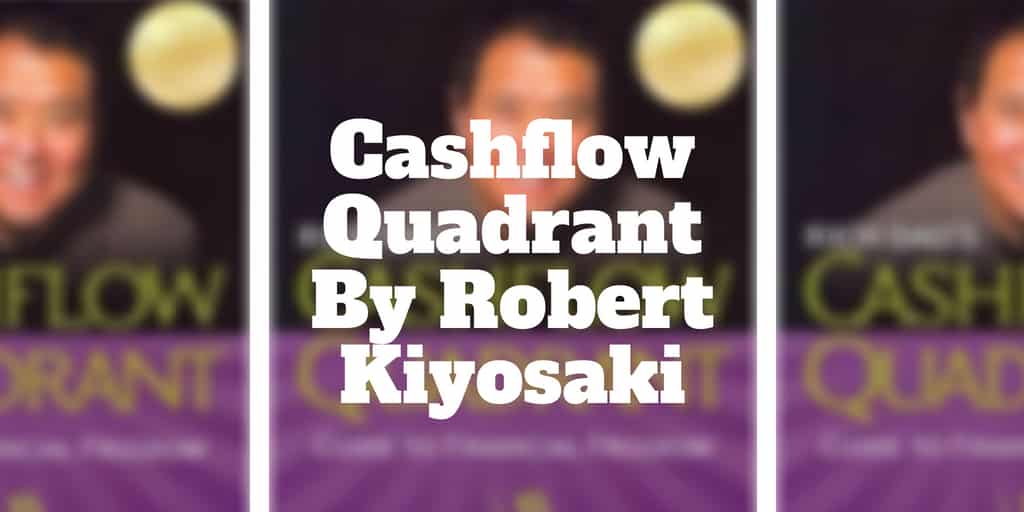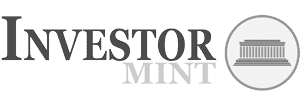

What is Robert Kiyosaki’s Cashflow Quadrant book about? In a word: taxes.
A book about taxes? Yawn! right? But hang tight, you will definitely want to read on to learn more about why if there were only one Robert Kiyosaki book to read, this would be it.
While the book contains lots of useful information, taxes underpin the major themes throughout it. The big idea which few salaried employees understand well is that investors and business owners pay far fewer taxes than employees.
And because taxes usually take the biggest chunk out of your paycheck each month, you should explore ways to lower them and find alternative income streams that enable you to pocket more of your earnings.
Cashflow Quadrant Summary
After the enormous success of his first book, Rich Dad Poor Dad, Robert Kiyosaki published Cashflow Quadrant.
And while Rich Dad Poor Dad has lots of valuable concepts in it, the book is not a “how to get rich guide” by any means.
Readers of the original Rich Dad book demanded more from Kiyosaki than high level concepts and, in the Cashflow Quadrant book, he delivered.
By spotlighting how much of your money is taken each month in taxes, Kiyosaki gives a proverbial kick in the butt to employees.
His assertion that it is dumb to live life as an employee and pay the government close to half of each paycheck is not made in a vacuum.
Yes, he takes aim at how unfair the US system of taxation is for employees, but he also provides tangible steps to pocket more income from your earnings.
Indeed, he walks readers down the path of how to transition from working every day to earn highly taxed money to not working whatsoever and paying low tax rates.
That’s a lofty promise to make so how does he do it? In this Cashflow Quadrant summary, we will walk you through the steps.
Step 1: Employees Pay Highest Tax Rates
Robert Kiyosaki fires shots at traditional academic institutions and the education system in general in his books, and with good reason.
High school and college classes rarely, if ever, teach students the skills needed to start, manage, and succeed in business.
Instead, Kiyosaki argues traditional education teaches kids to become employees.
But the U.S. tax code favors corporations and investors, not employees. So why not teach individuals how to become tax savvy and pay less to government?
In Cashflow Quadrant, Kiyosaki advocates that employees migrate their income streams to lower tax brackets.
The first leap is to move from Employee to Self-Employed.
As an Employee, you only earn income when you are “on the clock” so to speak.
If you decide not to show up for work, you may be fired. And if you want to earn more, you need to work more.
So, you don’t have a whole of opportunity to get really rich because you have to work ever harder to earn more.
And even then whether you remain in your job or get fired is not under your control.
A better alternative to a job is to become Self-Employed, argues Robert Kiyosaki.
And Reuters magazine calls this type of trading "the new baby boomer hobby." An anonymous trader -- living at the base of the Smoky Mountains -- just released a free report revealing a step-by-step system to generating an extra $5,000 per month in income thanks to this trading strategy. The report is free until Sunday.
Click here for the FREE REPORT...
Become Self-Employed To
Gain More Financial Freedom
Once you migrate from Employee to Self-Employed status, you gain more financial independence.
Many doctors and lawyers who work for themselves fall into this “Self-Employed” category. So too do owners of laundromats, dry cleaning stores, and these days even Uber Eats drivers.
When you become Self-Employed, you can legitimately deduct certain costs. For example, if you are a contractor for Uber, you could deduct various costs that would otherwise need to be paid with after-tax income.
Speak with your tax attorney to see which costs may qualify. You might be surprised to learn how much can be written off as expenses before you need to pay the government a dime.
Do The Math!
To keep the math simple, imagine an employee earning $100,000 who pays the government $40,000 in taxes and gets to keep $60,000.
It’s probably fair to guess that the biggest expense each year for the employee is their tax bill.
Even mortgage costs are unlikely to exceed $40,000 per year.
Now compare the taxes paid by a Self-employed person who earns the same $100,000 but gets to deduct $25,000 per year in business expenses.
That individual gets taxed on just $75,000 and so pays lower taxes than the salaried employee. Way to save money right!
But wait, there’s more…
➤ Free Guide: 5 Ways To Automate Your Retirement
Cashflow Quadrant Game:
Become A Business Owner
Alongside the release of his book, Kiyosaki released the Cashflow Quadrant game to help readers play a virtual game of life that transitions from high-tax bracket income streams to much lower tax-bracket earnings.
What he points out is that business owners, who he defines as employers of 500+ people, can vastly lower tax payments by setting up the right legal structures.
As a business owner, you don’t necessarily need to show up for work to earn an income. That means you don’t exchange your time for dollars.
Instead, you get paid by leveraging the collective efforts of your employees.
As your company generates revenues and profits, you get paid potentially even without lifting a finger!
Unlike self-employed individuals who have more autonomy than employees but are still largely “owned” by their jobs – because they still have to show up to make money – business owners can take days or weeks off at a time.
When the systems and processes are set up, employees generate money on behalf of the business owner, who reaps the rewards.
And the icing on the cake is the business owner pays fewer taxes.
But business owners are not at the top of the totem pole when it comes to low tax rates nor free of responsibilities. After all, most business owners still need to oversee hiring, salaries, business strategy, and so on.
The privilege of earning income without having to show up to work goes to the person in the fourth quadrant: the investor.
Become Wealthy As An Investor
Investors like Warren Buffett got rich not only because they are good a picking stocks but because they understand how the tax code favors investors.
Buffett frequently said that he gets taxed less than his secretary. The actual amount he paid in Federal and State taxes was higher but in percentage terms his secretary paid more.
His point was that, as an investor, he enjoyed all sorts of favorable tax breaks that employees do not receive.
For example, when you work for Amazon as an employee and decide to purchase a new personal computer at home, you need to pay for it with after-tax dollars.
As a business owner, you may be able to legitimately write off the purchase as a business expense provided you actually conduct business on the computer.
Over time all those deductions add up to some very meaningful savings. Instead of the money going into Uncle Sam’s coffers, they line your pockets instead.
And best of all, you don’t have to pick the next Google, Facebook, or Netflix to be a successful investor.
Some slow and steady dividend-paying stocks could fit the bill. Or you could purchase publishing rights to music, like Michael Jackson and Paul McCartney did in the past.
Or perhaps, like Michael Jordan or Mark Cuban, you could purchase a stake in private companies like they did with SportRadar, which provides sports data to TV networks among other clients.
The point is that, as an investor, you can receive a steady stream of income that is taxed at lower rates than the earnings received by employees. Plus, you don’t have to operate the businesses from one day to the next as business owners do.
In short, the holy grail is to become an investor because you earn passive income even when you are sleeping and pay among the lowest tax rates.
If you've struggled with trading techniques in the past and watched your mistakes affect your bottom line, you're not alone-but you can change that starting now!
I'm trading expert Thomas Wood and my e-guide, "Naked Trading Mastery" could give you the edge you need to make earning consistently easier than ever!
Get your free copy here!
Cashflow Quadrant
Book Summary
To become rich, Kiyosaki recommends migrating from the Employee category to one of the other three categories: Self-employed, Business Owner, or Investor.
| Cashflow Quadrant Categories | Description |
| Employee | You have a job |
| Self-employed | You own a job |
| Business Owner | You own a system and people work for you |
| Investor | Money works for you |
Employees exchange time for money. And you lose control of your time and income. When you fail to show up for work, your boss can lay you off.
Self-employed individuals gain more control over their time but are still tied to their work. Kiyosaki describes this category as the job owning them. To make money, they still need to work but they don’t risk being fired by a boss.
Business owners have much greater flexibility because they earn money on the back of the efforts of employees. However, they still have responsibilities to guide corporate strategy and manage operations. Nevertheless, the tax treatment is more favorable than it is for employees and many self-employed individuals.
The holy grail is to become an investor where passive income rolls into your bank account each and every month without having to work whatsoever, and the US tax code favors investors by charging much lower tax rates than are applied to employees.
What finance books have you read that you would recommend? Let us know what the top personal finance books are in your opinion, we would love to hear from you.
>> Best Stock Market Books For Beginners
>> Best Books On Technical Analysis
This has been one of the WORST years for stocks. But despite the awful trading conditions of the last eight months, I've delivered profit opportunities to my students like 22% on PBT after a week in the trade…And 31% on PEGA in only 8 days. I've JUST sent out a brand-new alert on a stock that's showing all the right signs of an impending breakout…
Click to Get the Trade and a Full Year of Stealth Trades for just $5 Today









